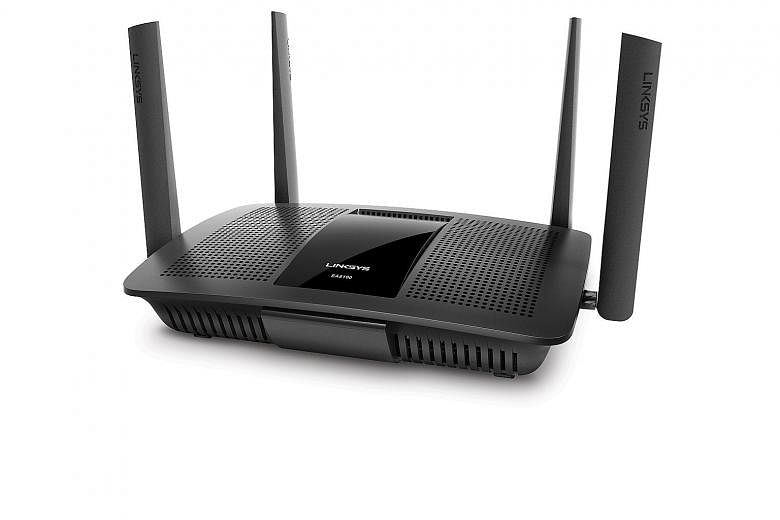One of the advantages of using a 5GHz router is to avoid the crowded 2.4GHz wireless channels that may lead to signal overlap and slower Wi-Fi performance.
But this advantage is seemingly eroded when all your neighbours' routers are using the same 5GHz wireless channels, as the Wi-Fi interference issue plaguing the 2.4GHz channels would likely crop up too.
Linksys wants to nip this problem in the bud with a feature called Dynamic Frequency Selection (DFS). Found in its new EA8100 Max-Stream AC2600 dual-band router, DFS lets the router use a number of 5GHz wireless channels traditionally reserved for radar systems.
Because only a handful of routers are currently DFS-certified, the idea here is that the EA8100 will avoid Wi-Fi interference by using these reserved channels.
To ensure that it will not fall afoul of radar interference, the EA8100 constantly scans these channels to locate suitable ones to use.
It is not the first DFS-certified router that I have tested. The high-end Linksys WRT32X gaming router also has this feature. So too, the Portal WiFi router, which dubs these reserved 5GHz channels FastLanes.
-
SPECS
-
PRICE: $329 (Free for those who sign up for or renew a StarHub fibre broadband plan)
ETHERNET INTERFACE: 1 x 10/100/1000 Gigabit WAN, 4 x 10/100/1000 Gigabit LAN
STANDARDS: 802.11a/b/g/n/ac
SECURITY: WPA/WPA2
ADVANCED FIREWALL FEATURES: NAT, DoS and SPI
RATING
FEATURES: 4/5
DESIGN: 3/5
PERFORMANCE: 4/5
VALUE FOR MONEY: 3/5
OVERALL: 4/5
But the scheme has a drawback. Some, especially older, devices do not support these reserved 5GHz channels.
During my testing of the Portal WiFi router last year, I found that my Samsung television set and an Android media player could not detect and use the DFS channels. Hence, they had to use the 2.4GHz channels, which are most likely to suffer from interference.
To assess the impact of the DFS feature, I set up the EA8100 and a second router at home. Both were manually assigned the same 5GHz channel (channel 36) to simulate a Wi-Fi interference scenario.
In my usual connection speed test, the EA8100 produced an average download speed of 565Mbps over a period of 60 seconds. While this may seem impressive, the actual speed varied significantly during this period, with dips that went down to around 400Mbps and peaks that were above 600Mbps. In other words, the speed was inconsistent.
Switching the EA8100 to use a DFS channel (channel 120) resulted in an obvious improvement in the connection speed test. Not only did the speed become much more consistent, but the average speed was also slightly higher, at 622Mbps.
Without assessing your home and its surrounding wireless landscape, it is difficult to say if it is worth getting the DFS feature. This is because 5GHz Wi-Fi signals inherently have a shorter range than 2.4GHz frequencies, so your neighbours' Wi-Fi signals may be relatively weak with little effect on your home's Wi-Fi coverage.
Besides its DFS feature, the EA8100 is a typical mid-range router. It supports the latest features, such as beamforming and MU-MIMO to improve Wi-Fi performance. The user interface is easy to use and offers features like prioritising bandwidth for up to three devices, guest networks and parental controls.
For those who prefer to use their smartphones, the EA8100 works with the sleek Linksys app (for iOS and Android). There are fewer settings in the app version compared with the Web browser interface, but most users should find it more than adequate.
• Verdict: Its DFS feature could be useful for those who live in apartments, but its impact is not always discernible.


